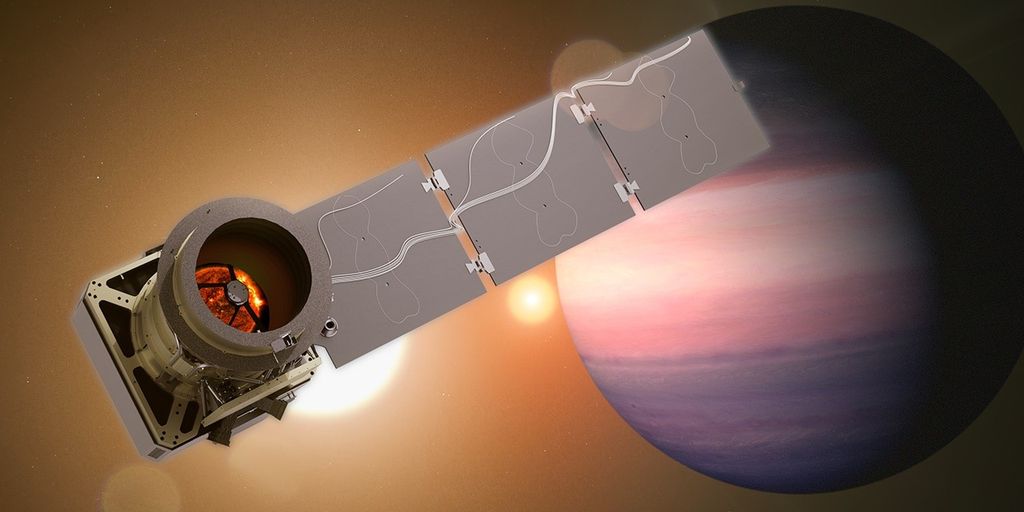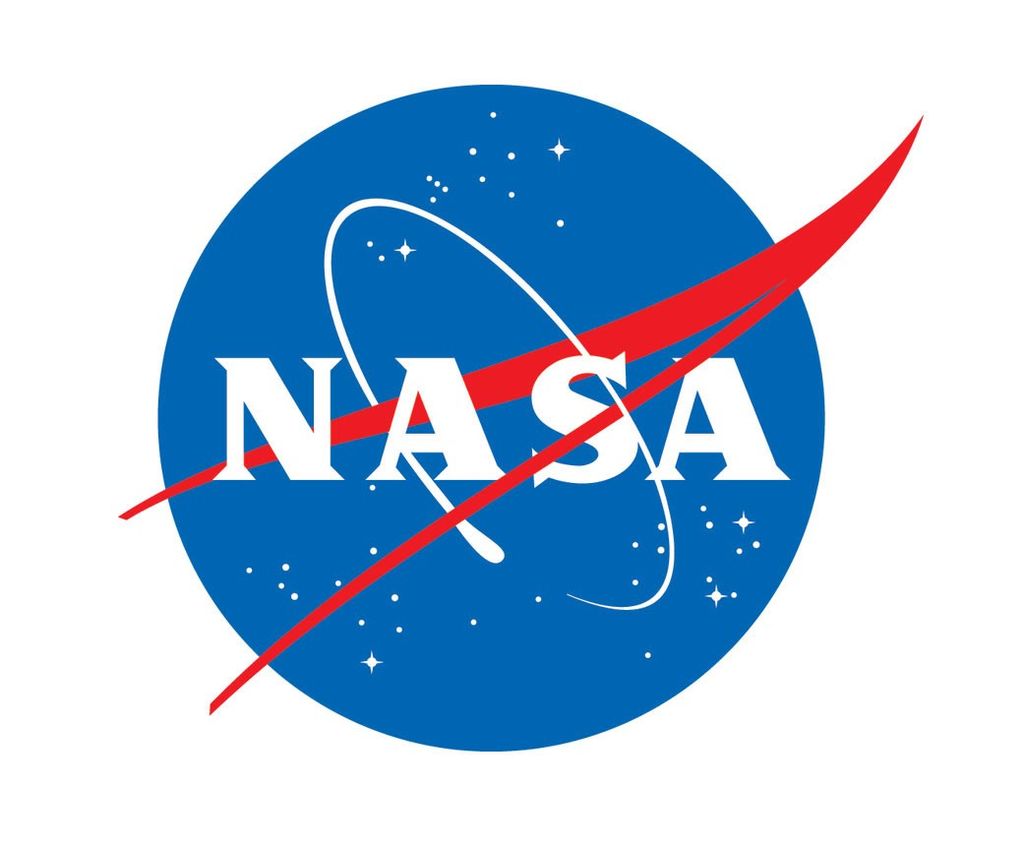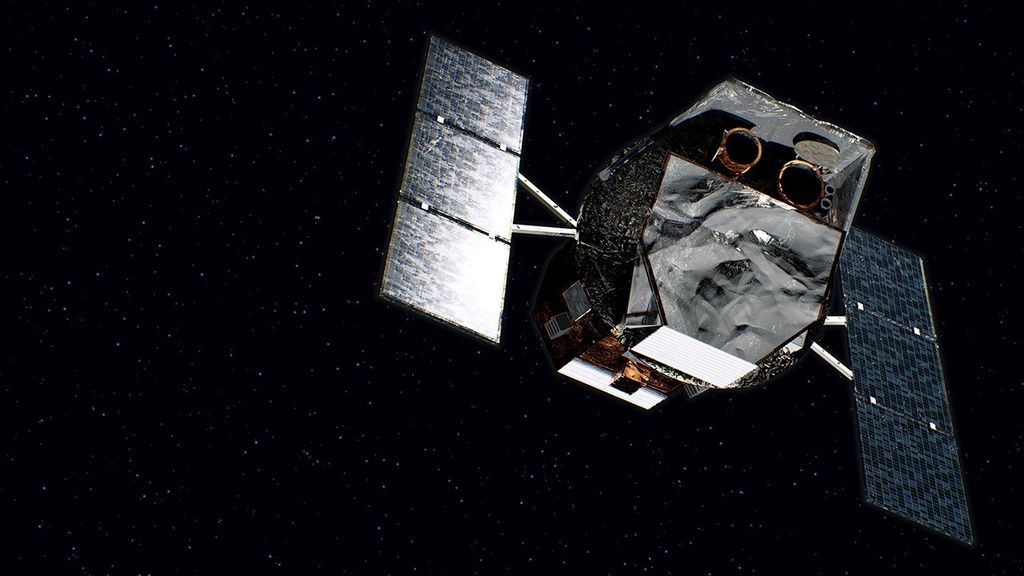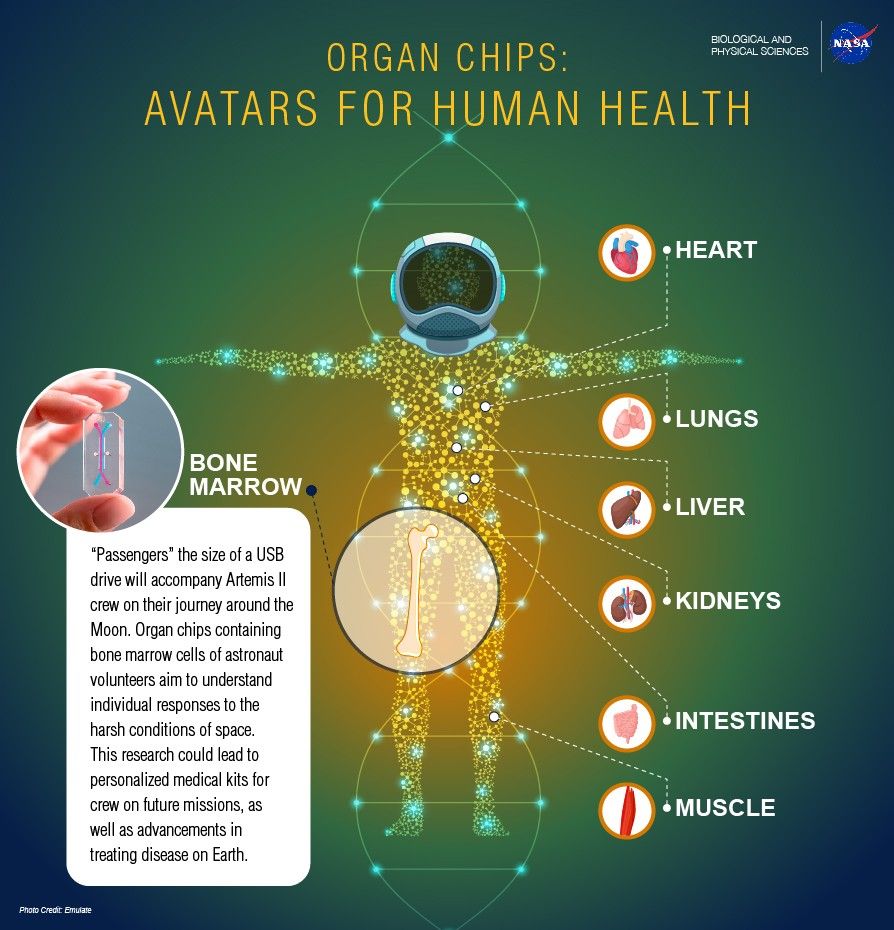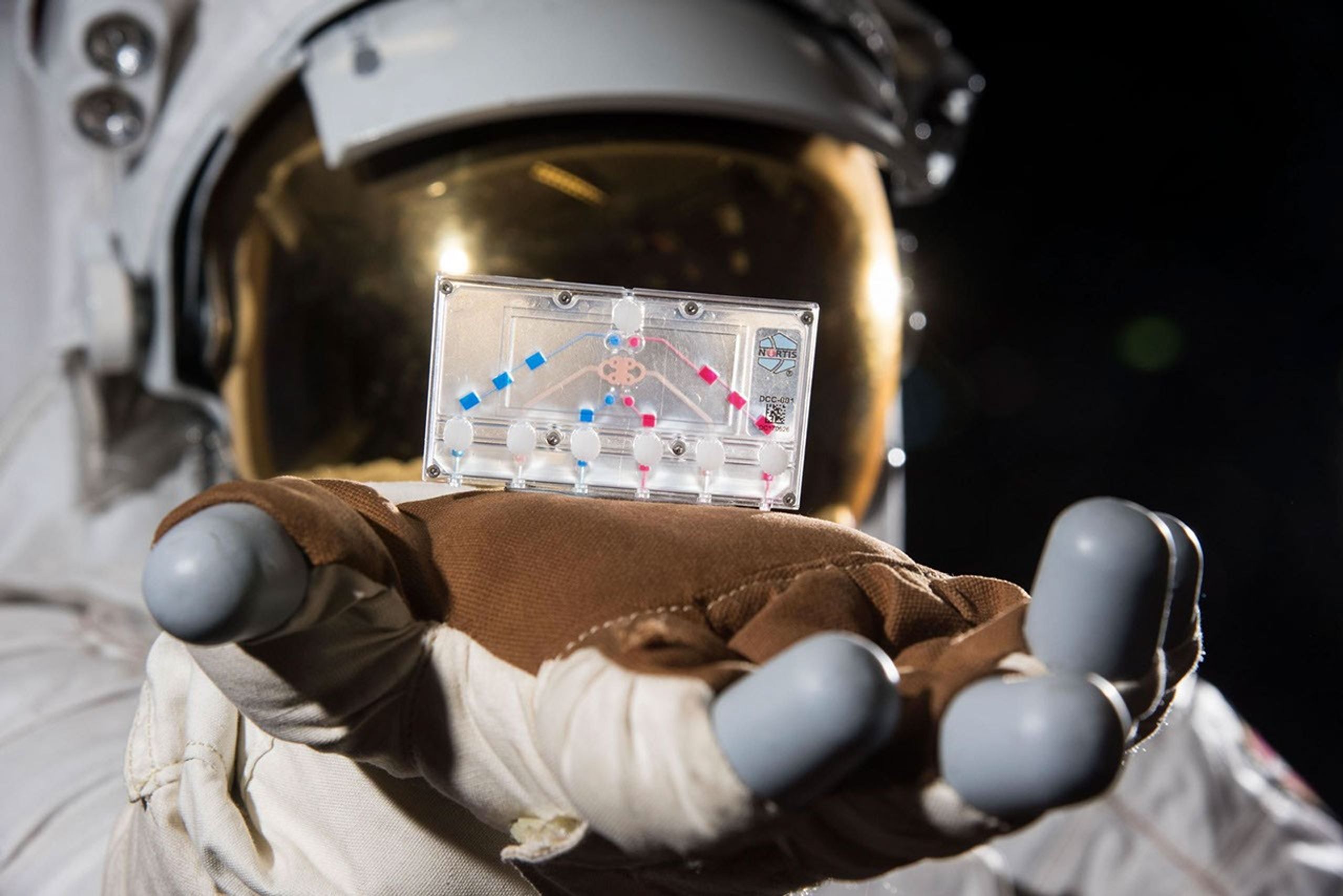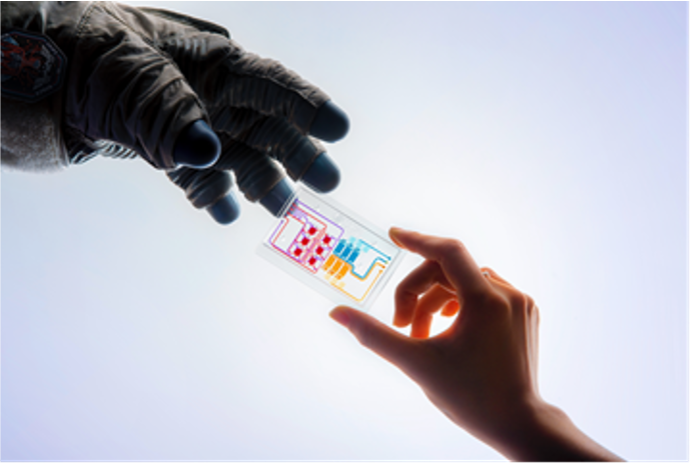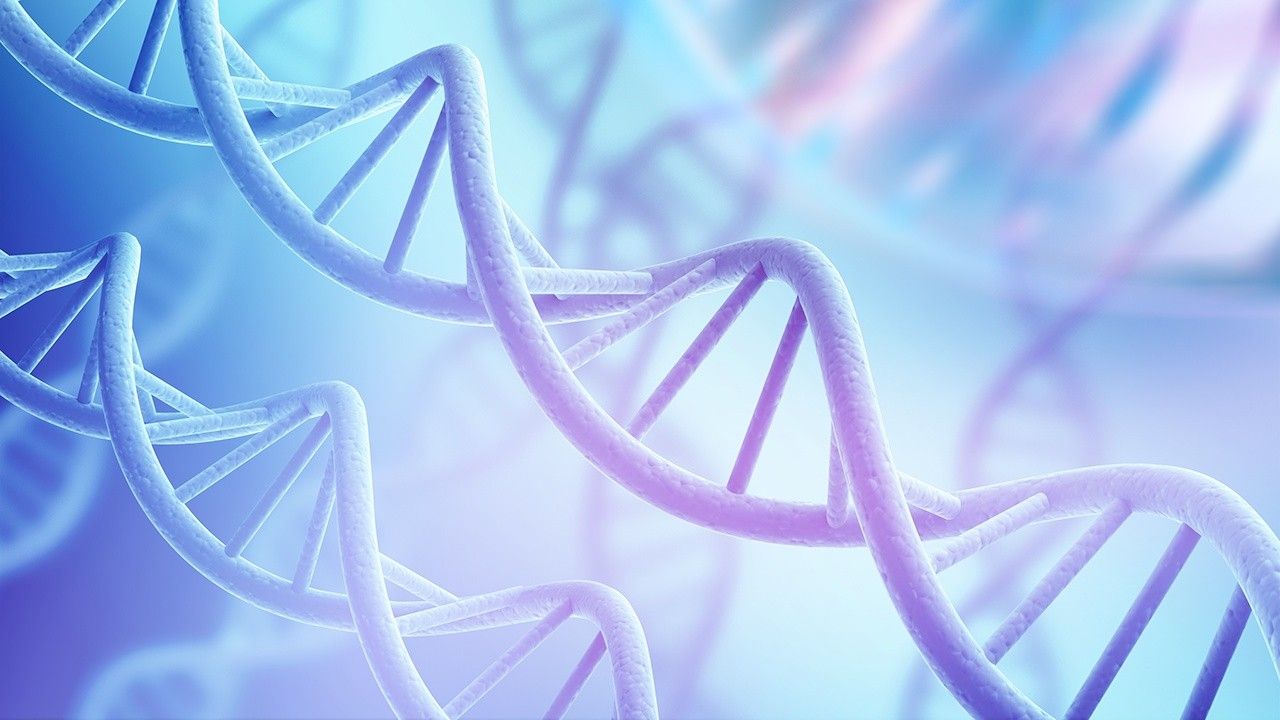Organ Chips: Avatars for Human Health
“Passengers” the size of a USB drive will accompany Artemis II crew on their journey around the Moon.
The AVATAR (A Virtual Astronaut Tissue Analog Response) investigation will study the effects of deep space stressors, including increased radiation and microgravity, on living human cells using organ-on-a-chip devices, or organ chips. The chips will contain bone marrow tissue developed from the cells of astronaut volunteers.
Bone marrow is responsible for producing red blood cells, white blood cells, and platelets. This makes marrow an ideal sample for diagnosing diseases and gauging how a person’s immune system responds to treatments.
To make the bone marrow chips, Artemis II astronauts will first donate platelets to a local healthcare system. The cells remaining from their samples will contain a small percentage of bone marrow-derived stem and progenitor cells.
After researchers purify these live cells, they will place them in the bone marrow chips next to blood vessel cells and other supporting cells. This will enable scientists to model the structure and function of the bone marrow “passengers.”
Organ chips have been used on Earth and in space to study many other human organs and tissues, including the brain, liver, heart, lung, and many more. This is the first time personalized organ chips, matched to the astronaut crew, will be flying beyond low Earth orbit.
NASA plans to use this research to better understand individualized responses to space, which could inform the development of personalized medical kits and preventative treatments for crew. It could also contribute to advancements in treating diseases, such as cancer, on Earth as well.
Benefitting space exploration:
NASA aims to better understand individualized responses to space, which could inform the development of medical kits and preventative treatments personalized to each astronaut.
Benefitting Earth:
Other U.S. government agencies, academic institutions, and commercial companies plan to use this research to uncover insights that could advance the treatment of disease.
Related Resources
Biological & Physical Sciences Division
-
NASA’s Biological and Physical Sciences Division pioneers scientific discovery and enables exploration by using space environments to conduct investigations not possible on Earth. Studying biological and physical phenomenon under extreme conditions allows researchers to advance the fundamental scientific knowledge required to go farther and stay longer in space, while also benefitting life on Earth.




